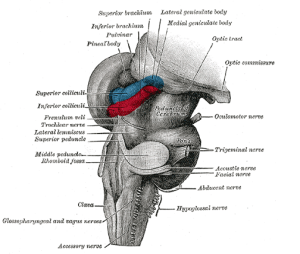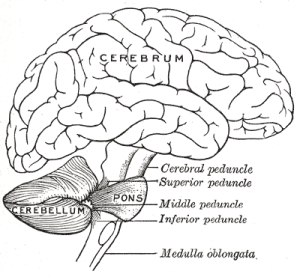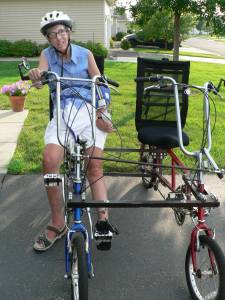Two surgeries on my brain stem have made me interested in the brain and its workings. What follows is not a tutorial but more of a refresher of what you had in your Human Biology course in high school.
The brain is a complex organ. It sits in our head and is composed of tissue. The brain is responsible for our sight, hearing, smell, touch, taste, balance, all the senses. It is the center of our nervous system. We, as human beings, are mammals and vertebrates. We have brains central to our development and well-being.
The different areas of our brain are: The medulla, along with the spinal cord, contains many small nuclei involved in a wide variety of sensory and motor functions.
The pons lies in the brainstem directly above the medulla. Among other things, it contains nuclei that control sleep, respiration, swallowing, bladder function, equilibrium, eye movement, facial expressions, and posture.
The hypothalamus is a small region at the base of the forebrain, whose complexity and importance belies its size. It is composed of numerous small nuclei, each with distinct connections and neurochemistry. The hypothalamus regulates sleep and wake cycles, eating and drinking, hormone release, and many other critical biological functions.
The thalamus is another collection of nuclei with diverse functions. Some are involved in relaying information to and from the cerebral hemispheres. Others are involved in motivation. The subthalamic area (zona incerta) seems to contain action-generating systems for several types of “consummatory” behaviors, including eating, drinking, defecation, and copulation.
The cerebellum modulates the outputs of other brain systems to make them precise. Removal of the cerebellum does not prevent an animal from doing anything in particular, but it makes actions hesitant and clumsy. This precision is not built-in, but learned by trial and error. Learning how to ride a bicycle is an example of a type of neural plasticity that may take place largely within the cerebellum.
The optic tectum allows actions to be directed toward points in space, most commonly in response to visual input. In mammals it is usually referred to as the superior colliculus, and its best-studied function is to direct eye movements. It also directs reaching movements and other object-directed actions. It receives strong visual inputs, but also inputs from other senses that are useful in directing actions, such as auditory input in owls and input from the thermosensitive pit organs in snakes. In some fishes, such as lampreys, this region is the largest part of the brain. The superior colliculus is part of the midbrain.
The pallium is a layer of gray matter that lies on the surface of the forebrain. In reptiles and mammals, it is called the cerebral cortex. Multiple functions involve the pallium, including olfaction and spatial memory. In mammals, where it becomes so large as to dominate the brain, it takes over functions from many other brain areas. In many mammals, the cerebral cortex consists of folded bulges called gyri that create deep furrows or fissures called sulci. The folds increase the surface area of the cortex and therefore increase the amount of gray matter and the amount of information that can be processed.
The hippocampus, strictly speaking, is found only in mammals. However, the area it derives from, the medial pallium, has counterparts in all vertebrates. There is evidence that this part of the brain is involved in spatial memory and navigation in fishes, birds, reptiles, and mammals.
The basal ganglia are a group of interconnected structures in the forebrain. The primary function of the basal ganglia appears to be action selection: they send inhibitory signals to all parts of the brain that can generate motor behaviors, and in the right circumstances can release the inhibition, so that the action-generating systems are able to execute their actions. Reward and punishment exert their most important neural effects by altering connections within the basal ganglia.
The olfactory bulb is a special structure that processes olfactory sensory signals and sends its output to the olfactory part of the pallium. It is a major brain component in many vertebrates, but is greatly reduced in primates.
Source: Wikipedia
I hope you enjoyed this because there is more coming,


